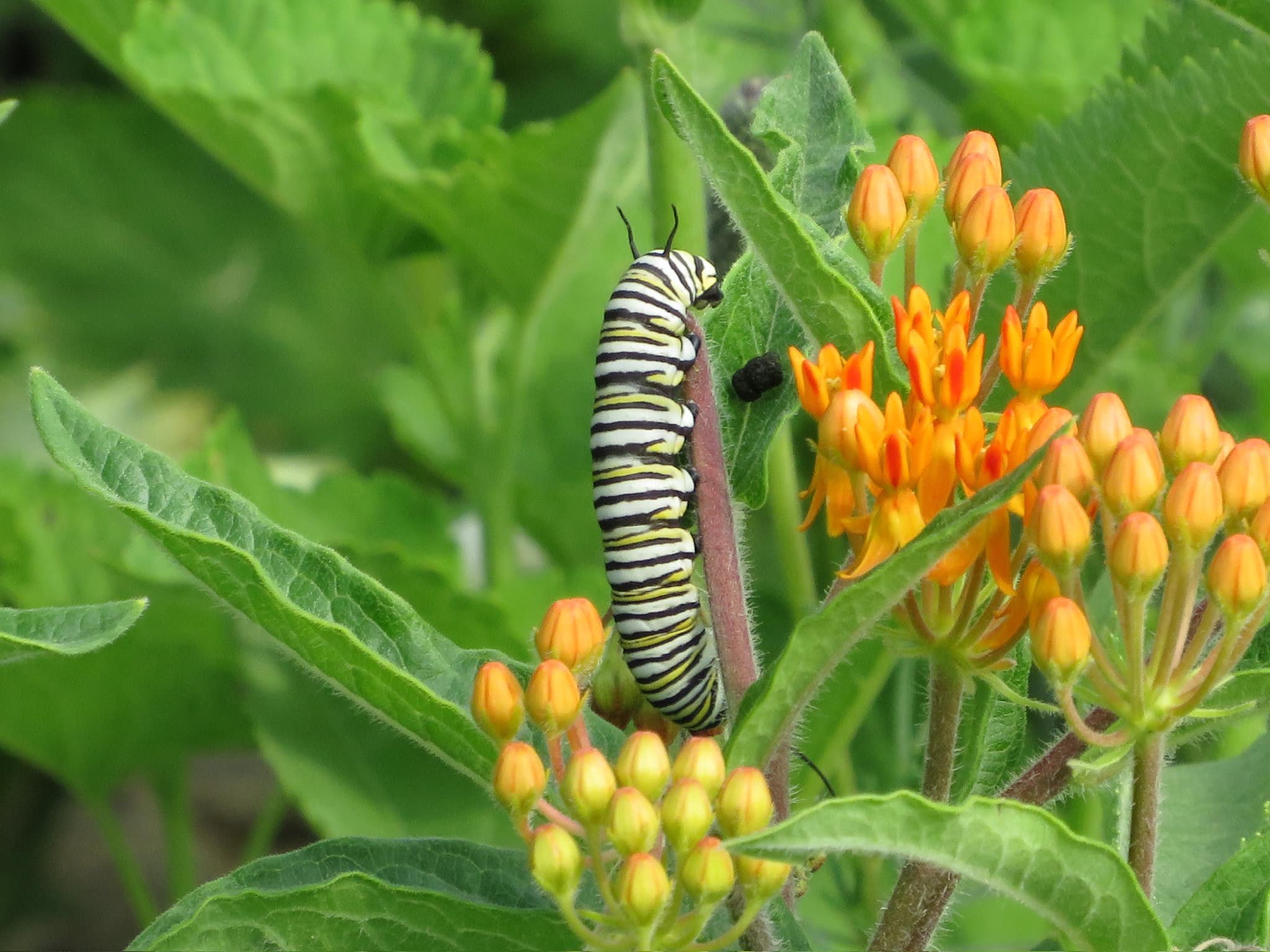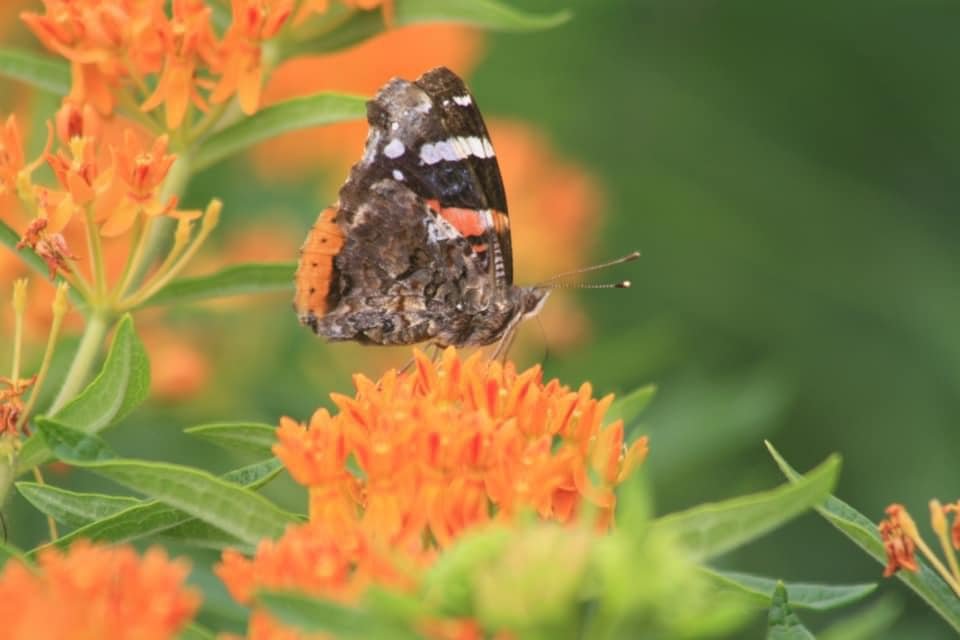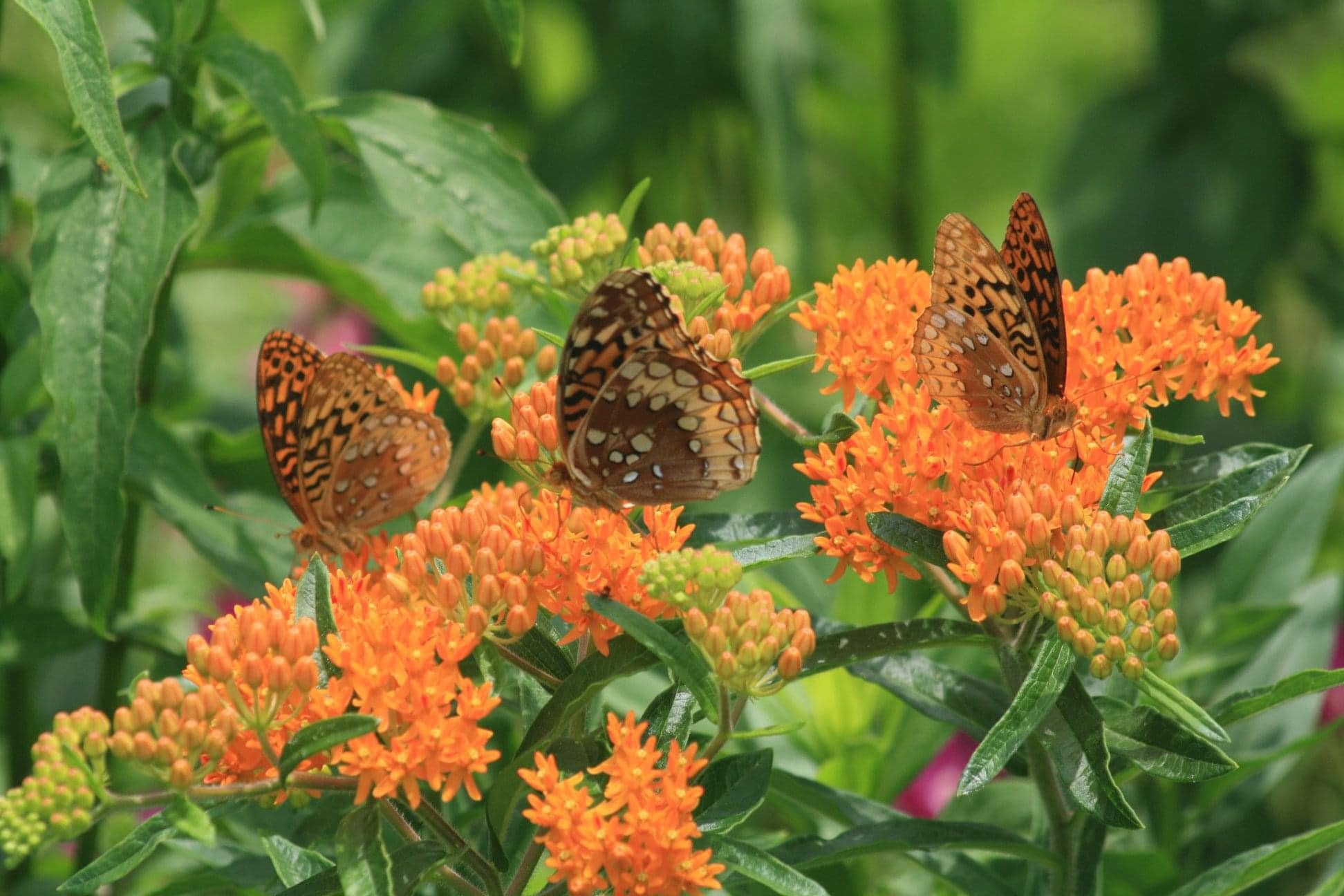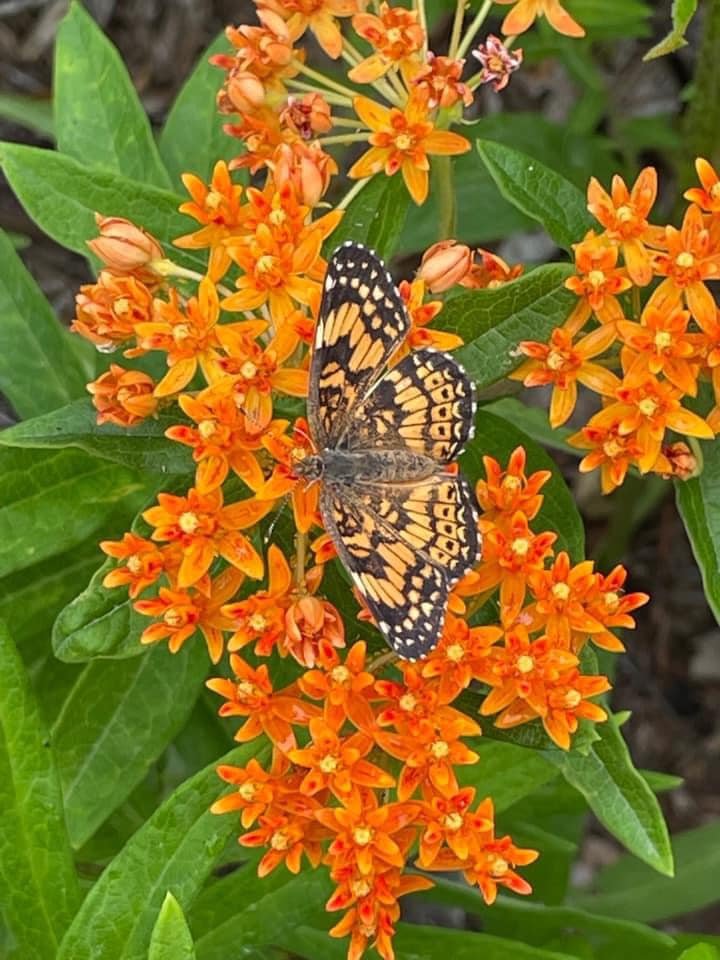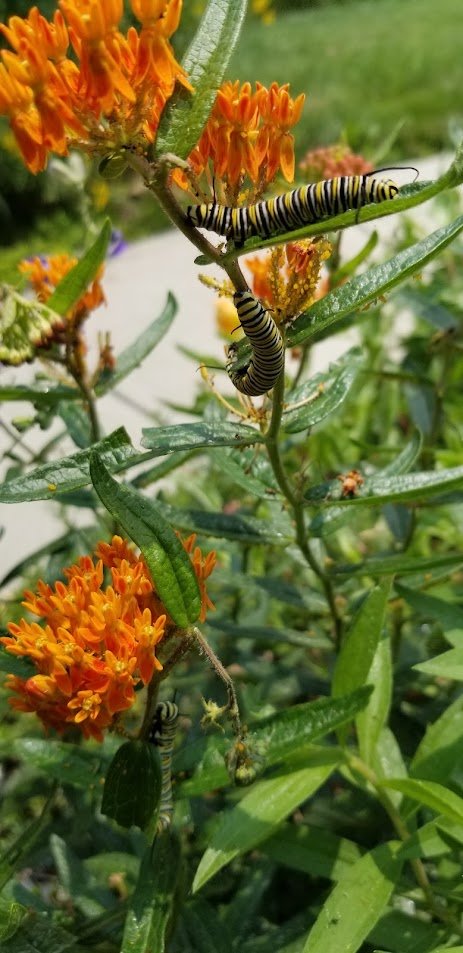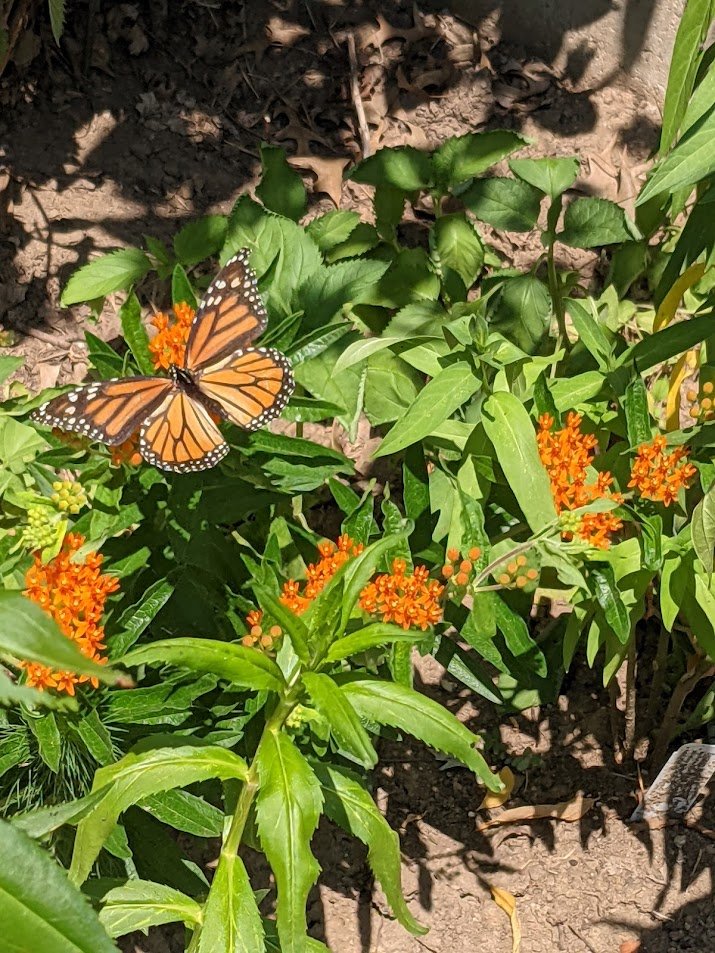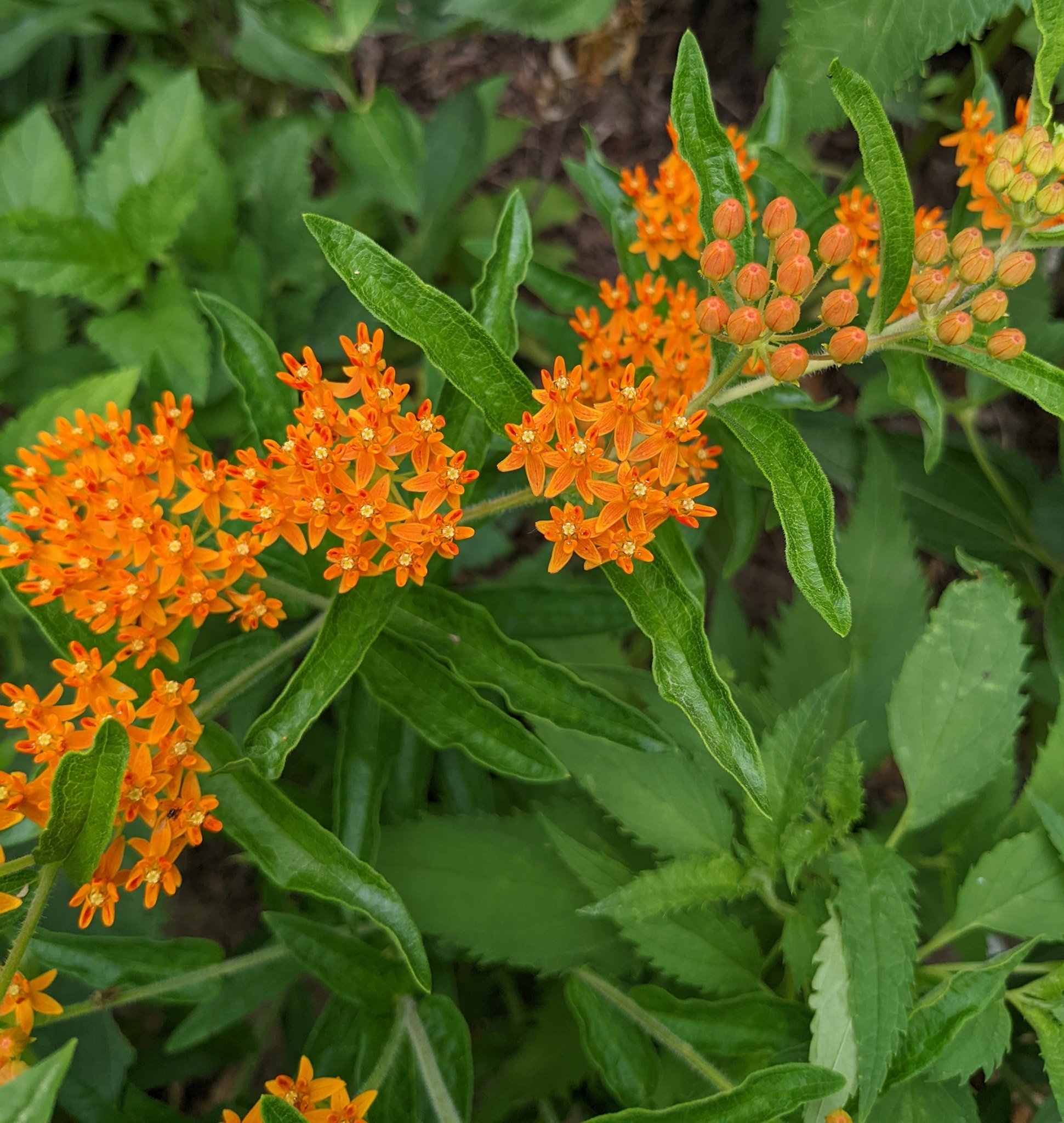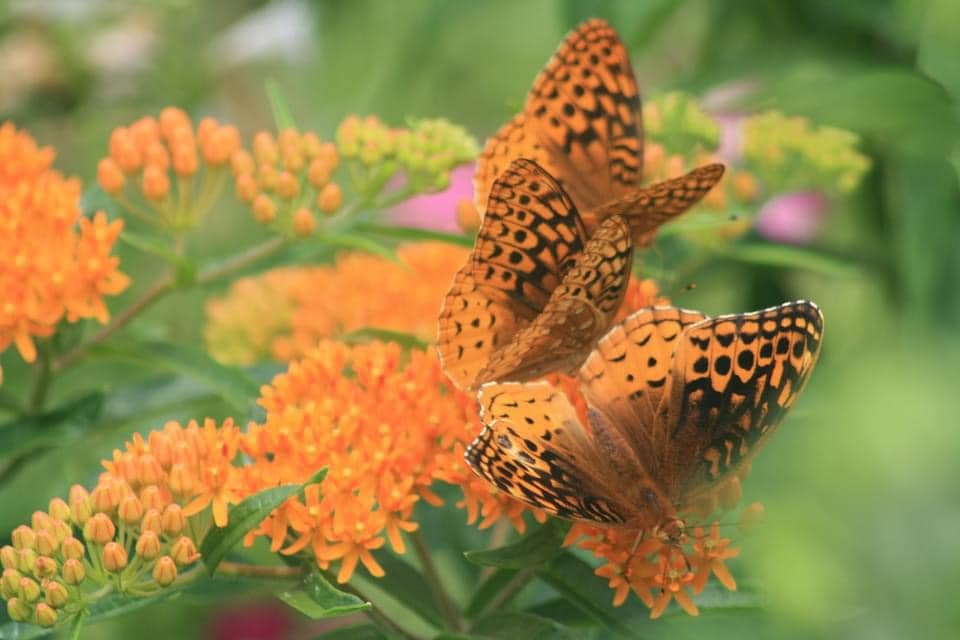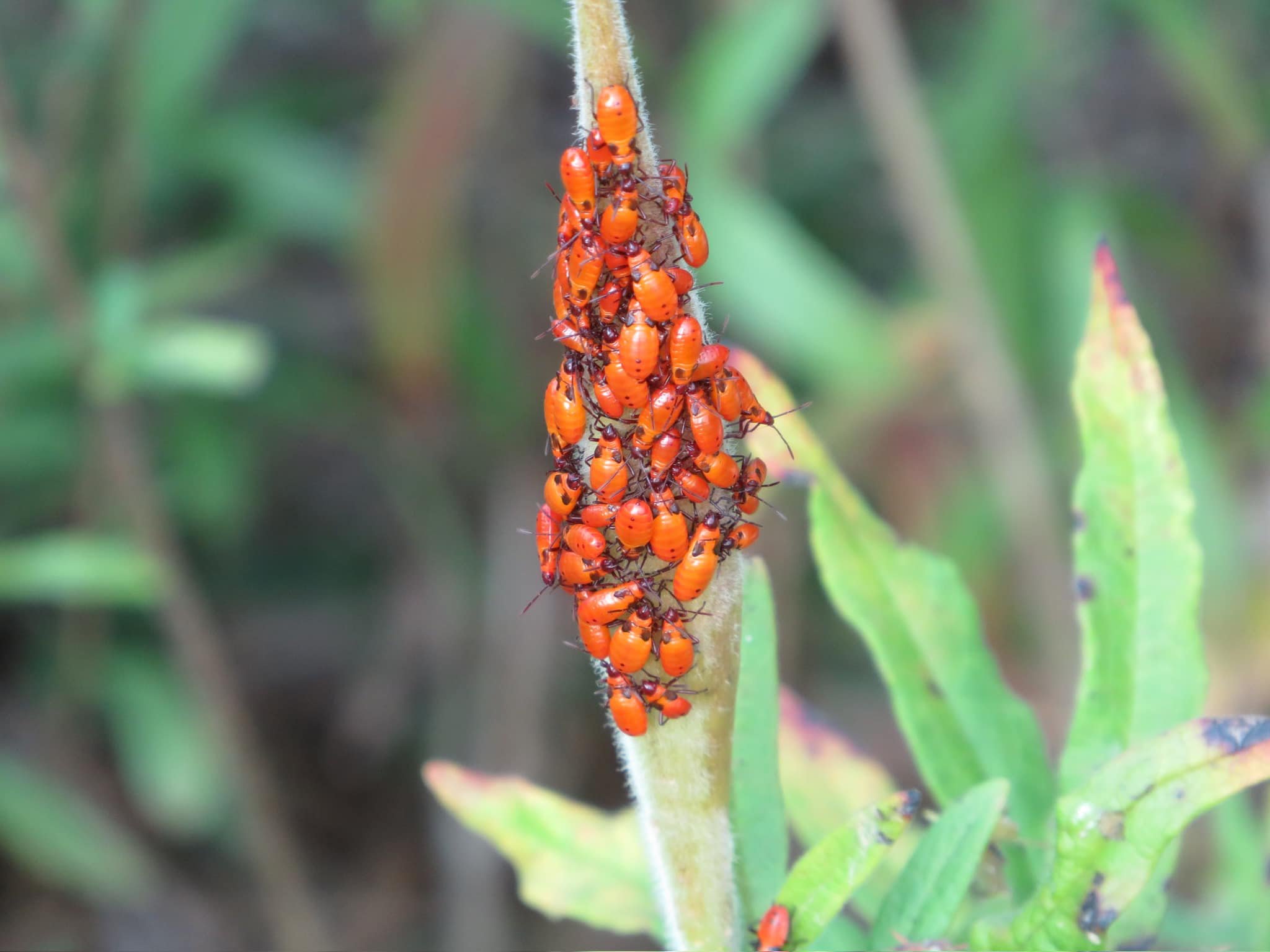Common Name: Butterfly Milkweed
Latin Name: Aclepias tuberosa
Height: 1.5-2 feet tall
Duration: Perennial
Bloom Color: Orange
Bloom Time: June - August
Water Use: Low
Soil: Average, well-drained, dry.
Light Requirement: Full Sun, Partial Sun
Spreads via seeds (not aggressive)
Host Plant: Caterpillars including the monarch butterfly, milkweed tussock moth, and the unexpected cycnia moth. Larvae of milkweed bugs and milkweed beetles also feed on the plant.
Pollinators: several types of bees (digger, leaf-cutter, metallic), wasps (thread-waisted and other Sphecid wasps), and butterflies (Fritillaries, Swallowtails, Monarchs). Ruby-throated hummingbirds also drink nectar.
Other Information: Foliage is both bitter and toxic, so it is usually not eaten by deer or rabbits. Supports Conservation Biological Control (A plant that attracts predatory or parasitoid insects that prey upon pest insects.). The root system consists of a woody taproot that is thick and knobby. This taproot can extend several feet below the ground surface, thus making the plant very drought tolerant. All milkweed will have aphids - this is not a problem. Natural predators like lacewings and ladybugs will hunt these pests, there is no need for pesticides, soaps, or spraying the plant with water. These practices will harm the beneficial insects that need the milkweed to survive.
